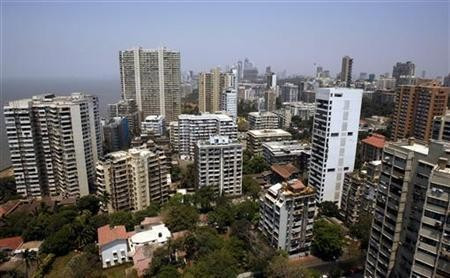India: Air pollution from fossil fuels cuts short millions of lives by three years, says study

India's polluted air is cutting 660 million lives short by about three years each, according to new research.
The study, led by Michael Greenstone of the University of Chicago and involving environmental economists from Harvard and Yale universities estimates that 99.5% of India's 1.2 billion people are breathing in air polluted above safe levels determined by WHO.
That nationwide pollution burden is estimated to cost more than half of India's population at least 3.2 years of their lives, according to the study, led by Michael Greenstone of the University of Chicago.
The study demonstrates how air pollution retards growth by causing people to die prematurely. It exposes the hidden costs of the country's heavy reliance on fossil fuels and lack of concern for the environment.
Around 13 Indian cities figure in the World Health Organization's list of the 20 most polluted ones.
"The extent of the problem is actually much larger than what we normally understand," said one of the study's co-authors, Anant Sudarshan, the India director of the Energy Policy Institute of Chicago. "We think of it as an urban problem, but the rural dimension has been ignored."
For the study, published in Economic & Political Weekly, the authors borrowed from their previous work in China, where life expectancy was shown to drop by three years for every 100 micrograms of fine particulate matter, called PM2.5, above safe levels.
The estimations could be conservative as they're based in part on 2012 satellite data that underestimated PM2.5 levels.
This tiny particulate matter is a major health concern globally as the particles are small enough to penetrate deep into the lungs.
India sets permissible levels for PM2.5 levels at 40 micrograms per cubic metre, twice the WHO's safe level. Even then, at around 200 the PM2.5 levels in Delhi far exceed the safe limit.
Air monitoring is erratic and restricted to a few cities, whereas rural air pollution is at a high thanks to industrial plants, poor fuel standards, extensive garbage burning and a heavy reliance on diesel for electricity.
Fossil fuel plans accelerated
One of the main reasons cited for the air pollution is the burning of fossil fuels to rev up the growth. To meet the increasing demand from development projects and the millions with still no access to electricity, the government has committed to tripling its coal-fired electricity capacity to 450 gigawatts by 2030.
To cater for coal-fired electricity, the Power Ministry plans to double coal production to 1 billion tons within five years.
The coal expansion plans through 2030 will at least double sulphur dioxide levels, along with those of nitrogen oxide and particulate matter, according to an earlier study published by Urban Emissions and the Mumbai-based nonprofit group Conservation Action Trust.
There are no regulations for pollutants like sulfur dioxide or mercury emissions from power plants or vehicles.
Vehicle fuel standards remain far below western norms and existing regulations often are ignored. Chemical analysis of PM10 particles in Delhi showed dangerous levels of carcinogenic toxins arising from vehicular exhaust in the road dust.
The Indian Ministry of Environment and Forests has only assessed the PM10 inventory, and has no information on the more deadly PM2.5 sources.
A report from The Energy and Resources Institute, Delhi, University of California, San Diego and the California Air Resources Board had warned that the vehicle population on Indian roads will increase air pollution up to five times over present levels.
Unless there is some control on vehicle numbers and modification of fuel and emission standards, PM2.5 will increase by a factor of three, while nitrous oxide emissions will rise by a factor of five, the report said.
The vehicle population has exploded in India from 20 million in 1991 to 140 million in 2011, and is expected to touch 400 million by 2030, going by present trends.
© Copyright IBTimes 2025. All rights reserved.




















